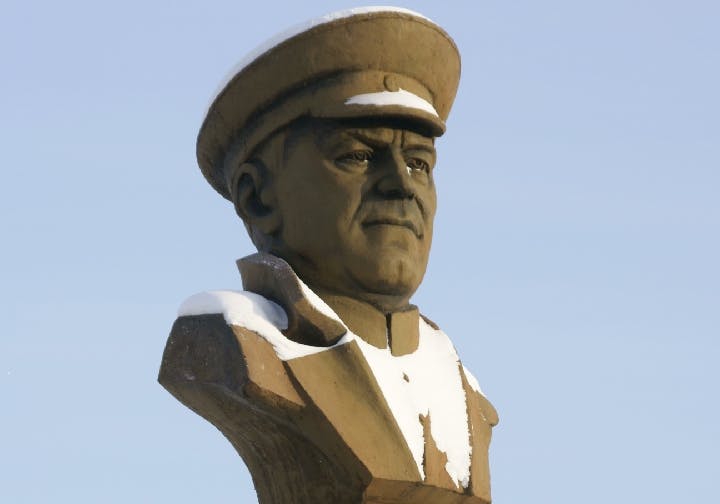The Rise of Siberian Nationalism
– Elizabeth Peet
What explains the resurgence in Siberian regionalism in recent years, and what does it mean for Putin’s Russia?
“I’m Siberian.” This simple but loud slogan has been emblazoned on merchandise from iPhone cases to T-shirts since 2012, as part of a branding campaign aimed at changing global perceptions of this huge chunk of Russian tundra. The “I’m Siberian” brand encapsulates a growing sense of pride and self-identity among Siberian youth, but where has this sentiment come from, and what does it mean for Russia?
Siberia has historically been a byword for remoteness and unforgiving cold. Scottish explorer John Cochrane wrote in 1824 that “there is so little of interest in Siberia, so little to be seen, that it is hardly possible to form an interesting work on the topic.” Covering a vast area of over 13 million square kilometers — 77 percent of Russia’s total land mass — Siberia is inhabited by 40 million people, which equates to just 3 inhabitants per square kilometer, making it one of the most sparsely populated areas in the world.
In recent years, this icy expanse has seen political activism and regionalism ignited, as Stanislav Zakharkin, a Russian sociologist, writes in Eurozine. Yet Siberian nationalism is not a new phenomenon. In the nineteenth century, an argument evolved among Siberian intellectuals that the region had effectively been colonized by Russia. Having been tossed aside as a penal colony for centuries, Siberia’s economic concerns, long neglected by those in power in Russia’s far west, seem to have been paramount to the people who lived there.
According to influential works at the time, such as Nikolai Yadrintsev’s 1892 book Siberia as a Colony, the imperial center was exploiting Siberia’s abundant natural resources through an uneven trade and revenue system. This system was enforced by a central political bureaucracy and a lack of cultural or intellectual investment in the region, all designed to submerge Siberians into the wider Russian Empire.
Following the collapse of Tsarist Russia, the region was quickly swallowed up again by the highly centralized Soviet Union. The economic inequalities in the relationship between Russia’s central government and Siberia have thus never been resolved. In 2012, the Siberian region of Tomsk delivered 130 billion roubles in tax revenues to Moscow, and received just 10.3 billion roubles back in investment; to meet its financial needs and obligations, the region was forced to resort to loans from commercial banks.
The grievances of the Siberian people may have been historically suppressed, but they have never gone away and now rise anew under Vladimir Putin’s ever-more-centralized regime. Under Putin, Russian executive powers have been hugely increased at the expense of local autonomy, with reforms from 2004 onwards giving the central government significant influence over the selection of regional governors. This system of “vertical power” has meant that, according to Zakharkin, “Russian governors have finally turned into the mouthpieces of federal policy,” and it is this erosion of local power that has inflamed Siberian hostility to Moscow. A separatist rally was held in the Siberian city of Novosibirsk in 2011, with demonstrators chanting the slogan “stop feeding Moscow!” At a press conference, Rostislav Antonov, the protest’s key organizer, complained that Siberia “is the main source of wealth for Russia, and yet it does not have enough money for basic necessities.”
This growing hostility to Moscow has contributed to a resurgence of regional pride across Siberia, as demonstrated in the popularity of the “I’m Siberian” brand among Siberia’s younger generations. Beyond this commercial manifestation, Siberia’s insistent pride has blossomed in the region’s art scene. In 2013, a popular art exhibition titled the “United States of Siberia” was one realization of a Siberian artistic renaissance led by Anna Tereshkova and the Siberian Centre of Contemporary Art. The centre and its various exhibitions have been denounced by many local MPs and conservative organizations — all eager to show allegiance to Putin — as offensive to Russian patriotism in its celebration of local culture.
Last year, the gulf between the growth of Siberian pride and the conservative federal government reaction found a stark embodiment in a proposed “March for the Federalization of Siberia.” The demonstration, due to be held in Novosibirsk in August 2014, was banned by the Russian government, with a media blackout imposed and several organizers arrested. Putin’s harsh response implies a degree of fear that the federalist movement is in danger of succeeding and threatening his centralizing agenda. In comments to the press in December 2014, Putin reignited the commonly held suspicion among Russian nationalists that outside powers intend to annex Siberia for themselves. “We have heard it even from high-level officials that it is unfair that the whole of Siberia, with its immense resources, belongs to Russia in its entirety,” said Putin. “Why exactly is it unfair? So it is fair to snatch Texas from Mexico, but it is unfair that we are working on our own land? No, we have to share.” Stoking anti-American sentiment and Russian patriotism arguably indicates a sense of fear of internal disharmony.
There have always been tensions between local federalists and the central government in Moscow, but the last few years have seen these tensions heat into a rolling boil. Zakharkin makes the case that the Siberian movement, at least in its present form, does not pose any immediate threat to Russian unity. He labels it “a grassroots cultural phenomenon that is gaining popularity against the background of real anti-Moscow sentiment.” However, Zakharkin notes that “activists have neither the political nor the financial leverage to influence those in power.”
If the status quo continues — and with it, the perception that the centralized government is benefiting from an unequal and exploitative economic and political system — Moscow could face a real problem in the coming years.
* * *
The Source: Stanislav Zakharkin, “What’s in store for the Siberian movement?”, Eurozine June 11, 2015
Photo courtesy of Shutterstock/Alex Po
